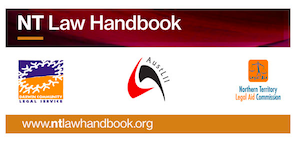-- JonathanMo - 14 Sep 2015
Note that the section requires that an infringer use the mark as a trade mark, and not for some other purpose. Accordingly, depiction in the course of comparative advertising by a competitor does not constitute an infringement under the TMA. See Shell Co of Australia Ltd v Esso Standard Oil (Australia) Ltd [1963] HCA 66; (1963) 109 CLR 407; see also Fender Australia Pty Ltd v Bevk (t/a Guitar Crazy) [1989] FCA 276; (1989) 25 FCR 161; 15 IPR 267. See Polaroid Corporation v Sole N Pty Ltd [1981] 1 NSWLR 491, and Berlei Hestia Industries Ltd v Bali Co Inc [1973] HCA 43; (1973) 129 CLR 353.
However, in occasional cases even the use of the exact words of a trade mark will not be an infringement if there is added to the trade mark words extra words which make it clear that there is no suggestion of substantial identity or deceptive similarity. See Angoves Pty Ltd v Johnson (1982) 66 FLR 216; 43 ALR 349 at 362.
Trade mark infringements and offences
Infringements
Section 120(1) of the TMA provides a simple definition of an infringement, namely:a person infringes a registered trade mark if the person uses as a trade mark a sign that is substantially identical with, or deceptively similar to, the trade mark in relation to goods or services in respect of which the trade mark is registered.
Parallel importation
Importing goods that bear an infringing trade mark amounts to 'using' that trade mark in an infringing way. However, the situation is still somewhat unclear in respect of the parallel importation of goods bearing a foreign registered trade mark. In particular, uncertainty still exists as to whether goods imported by, or with the consent of, a trade mark proprietor outside Australia, in competition with the authorised Australian importer or distributor constitutes an infringement of the TMA. This question is similar to that arising in relation to copyright: if the strict legal position is taken that such importing is always infringement, this can amount to permitting a monopoly and, broadly speaking, restraint of trade. Section 123 of the TMA would appear to adopt the doctrine of international exhaustion, whereby the placement of goods into a local market exhausts the owner's right to control subsequent dealings with those goods or services. Hence such parallel importation does not infringe the trade mark. However, Part 13 (section 131) of the TMA states that 'the object of this Part is to protect registered trade marks by making provision allowing the Customs CEO to seize and deal with goods that are imported into Australia if the importation infringes, or appears to infringe, a registered trade mark'. Such goods may be seized but the objector must bring an action for infringement within ten working days under section 137, and must prove 'infringement'. See Montana Tyres Rims & Tubes Pty Ltd v Transport Tyre Sales Pty Ltd (1998) 155 ALR 489; 41 IPR 301 and Transport Tyre Sales Pty Ltd v Montana Tyres Rims & Tubes Pty Ltd [1999] FCA 329; (1999) 93 FCR 421; 162 ALR 175.Defences
Defences to allegations of trade mark infringement could include:- using one's own name or place of business is not an infringement of someone else's trade mark [TMA s.122]
- using a trade mark which has been applied by or with the consent of the registered owner [TMA s.123]
- the mark was first used prior to the registration by the owner of the mark [TMA s.124].
Remedies
Under section 126 of the TMA, the remedies include an injunction, and damages or an account of profits.Offences
A person is guilty of an offence if the person:- falsifies or unlawfully removes a trade mark that has been applied to or in relation to any goods or services being dealt with or provided in the course of trade
- falsifies a registered trade mark by defacing, altering, adding to or obliterating it without the permission of the registered owner, or an authorised user [TMA s.145]
- falsely applies a registered trade mark, or a sign substantially similar to it, to goods or services [TMA s.146]
- makes a die, machine or instrument knowing that it is likely to be used for, or in the course of, committing an offence against ss.145 or 146; or reckless of whether or not it is likely to be used
- draws, or programs a computer etc. to draw a registered trade mark or part thereof, knowing that the mark produced is likely to be used for committing an offence
- possesses or disposes of a die, equipment etc, computer, or other device, programmed to draw a registered trade mark or part thereof, knowing that it is likely to be used for committing an offence [TMA s.147]
- intentionally sells, possesses, exposes for sale, or imports goods for trade or manufacture, knowing that a falsified registered trade mark is applied or registered trade mark removed [TMA s.148].
- aiding and abetting offences [TMA s. 150]
- false representations about a mark being a registered trade mark [TMA s.151)
- false entries in Register or a document in the Trade Marks Office
- disobeying a summons etc
- refusing to give evidence etc
- claiming or permitting to be described as a trade marks attorney or trade marks agent unless so registered
- falsely claiming or implying some connection with the Trade Marks Office.
 Copyright © by the contributing authors. All material on this collaboration platform is the property of the contributing authors.
Copyright © by the contributing authors. All material on this collaboration platform is the property of the contributing authors. Ideas, requests, problems regarding AustLII Communities? Send feedback
This website is using cookies. More info.
That's Fine

